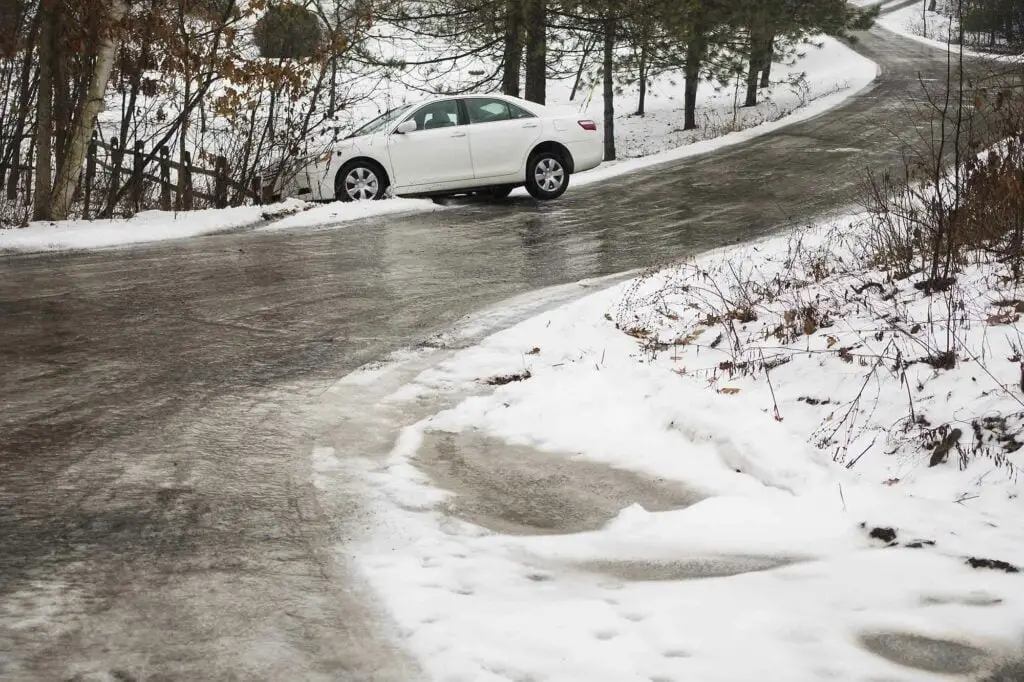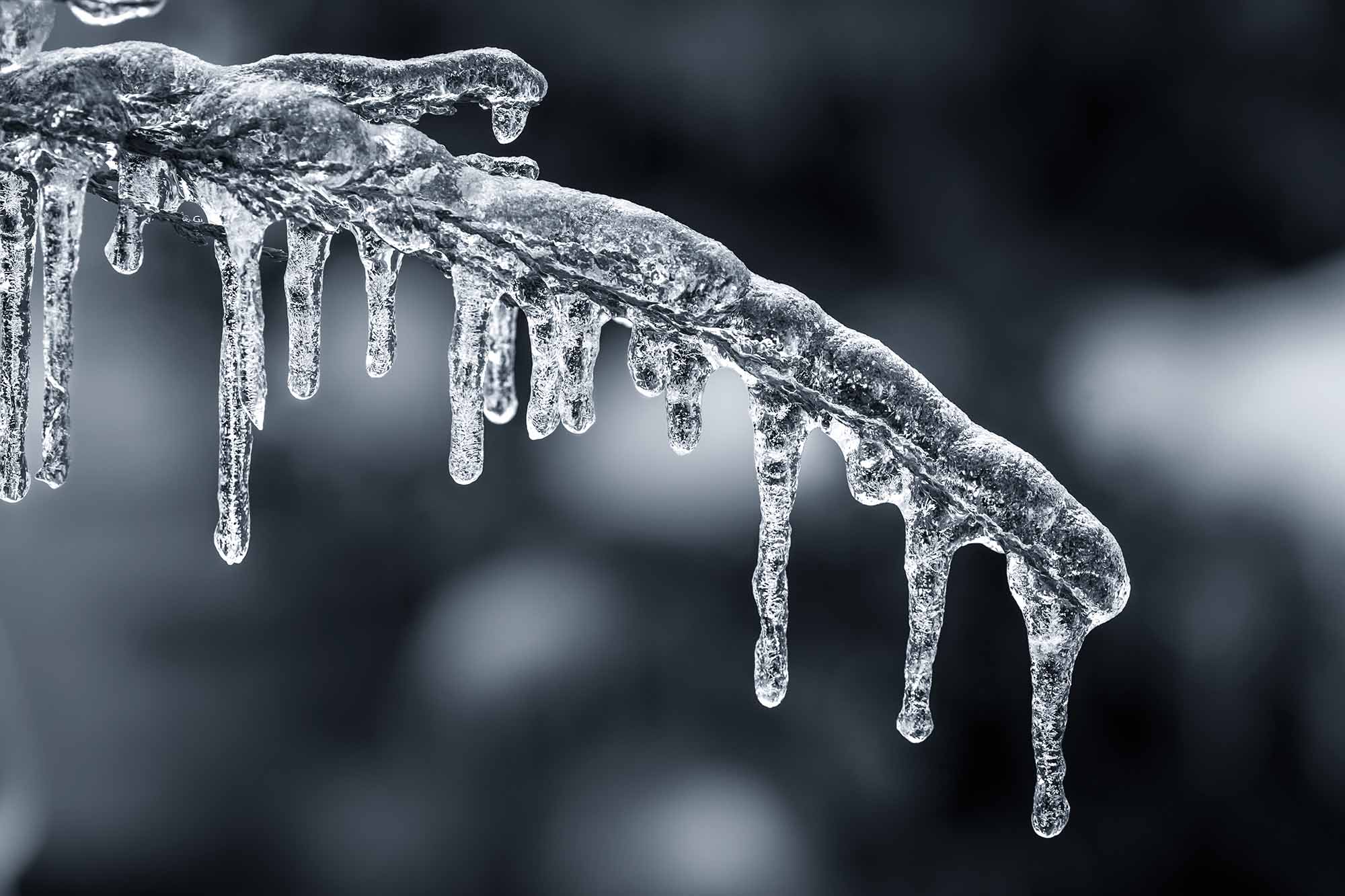In the Northeastern US, ice storms are dangerous winter weather events that can cause extensive damage due to severe ice accumulation. Severe ice storms are commonplace in states like Vermont, Pennsylvania, New York, and New Jersey during cold winters but have also occurred in states further south and west.
The National Weather Service issues an Ice Storm Warning when a quarter-inch or more ice accumulation is likely in a given area. Read on to learn more about ice storms, warnings, and some ice storm safety tips.
What is an Ice Storm?
Freezing rain is the primary feature of ice storms: water droplets freeze upon contact with the ground and cause ice accumulation. Although ice storms vary in severity, the effects of an ice storm can last several days due to ice accumulation. Only a quarter-inch or more of ice accumulation is necessary to cause unsafe traveling conditions, and additional accumulation will pose a risk of property damage as well.
Some common hazards caused by ice storms include:
- Falling tree branches
- Damage to power lines and power poles
- Slippery driveways and roads
As ice accumulates on tree branches, these branches break and fall onto powerlines, resulting in power outages in the area. Additionally, driving during an ice storm is unsafe because it is difficult to find traction on slippery roads. Even all-wheel-drive vehicles cannot find traction because AWD requires at least some traction to work.

What is an Ice Storm Warning?
As previously stated, the National Weather Service issues an Ice Storm Warning when a quarter-inch or more ice accumulation is expected to occur in an area. Ice storms can significantly impact travel conditions, making driving unsafe and risky.
Aside from contributing to unsafe travel conditions, ice storms can damage or cause roofs to collapse. In some cases, the additional weight from this ice also causes tree branches to fall onto nearby property and power lines needed for electric services. Keep reading to learn about some vital ice storm safety tips.
Ice Storm Safety Tips
With proper maintenance and preparation, you can minimize damage and be ready to deal with other severe winter weather. Ice storms are not limited to a specific region, so it is essential to understand the different ways you can prepare for ice storms. Here are some ice storm safety tips to help you prepare if an Ice Storm Warning has been issued:
- Seek shelter and prepare an emergency kit. Freezing rain is the primary precipitation types in ice storms, so staying indoors is the most effective way to preserve your body heat and avoid conditions like hypothermia or frostbite. Since an ice storm’s effects can last for days, stocking up on non-perishable food items and warm winter clothes are essential while waiting for an ice storm to pass.
- Park vehicles in a garage or covered parking space. As ice accumulates on trees, branches can break and fall, which can damage your vehicle. Park vehicles in a garage or a covered parking spot.
- Remove snow from roofs and walkways. Ice storms produce large quantities of ice that can add substantial weight to roofs and other structures. Consequently, poorly maintained roofs and snow-covered roofs are vulnerable to collapse during an ice storm. If your region regularly experiences snow and ice, you should remove snow from your roof and walkways for safety purposes in an ice storm.
Although safety should always be a top priority, access to up-to-the-minute information, weather forecasts, and additional warnings during an ice storm are essential. Investing in a weather radio can help you stay informed during an ice storm or other severe forms of weather.
The Midland WR300 is one of the best weather radios currently available. With standard SAME alerts and non-weather alerts, the Midland WR300 is equipped with a large, easy-to-read display and much more.

Wrapping Up
There are numerous ways ice storms can significantly impact you and your home, but you can mitigate this impact by taking steps to prepare now if an Ice Storm Warning is in effect. Whether it is for ice storms or other winter weather situations, weather radios are an excellent tool for keeping you up to date on the latest weather forecasts.


